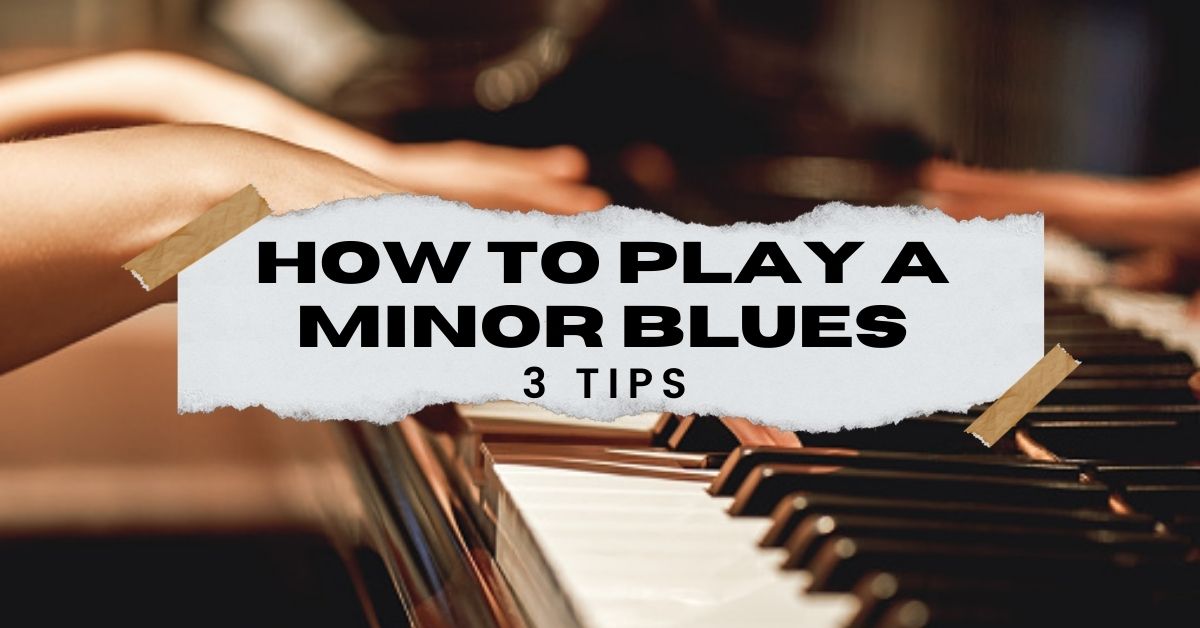How to Play a Minor Blues - 3 Tips

In this article we're going to talk about an important but somewhat neglected topic in jazz and rock music - how to play a minor blues. The minor blues form is similar to the major blues form but also has some very important differences. It's not just simply a matter of changing all the dominant chords to minor chords. We're going to discuss three specific aspects of the minor blues: the form and chord progression, some specific piano voicings that are commonly used for comping (and sound great!), and the chord scales that can be used for soloing. Let's get started.
How to Play a Minor Blues - Tip #1: The Form
Just like the traditional, dominant chord-based blues form, the minor blues form is based on 12 bars. These 12 bars can be viewed as three sets of four measures each:
- Measures 1-4 = the minor "i" chord (notice that we use lower-case Roman numerals for minor and diminished chords, and upper-case Roman numerals for major and dominant chords);
- Measures 5-8 = two bars of the "iv" chord followed by two bars of the "i" chord;
- Measures 9-12 = one bar of what we'll call the "flat VI dominant" chord, one bar of the "V7" chord, and two bars of the "i" chord.
Let's plug these chords into the 12-bar minor blues form in the key of C minor. You should check out John Coltrane's tune "Equinox" to see and hear this exact chord progression played by the masters.
How to Play a Minor Blues - Tip #2: The Chord Voicings
Now a note about the chords. Many fakebooks and lead sheets will show all of the minor chords in a minor blues form written as minor 7th chords. There is nothing wrong with playing the minor chords this way, but notice that many tunes simply write the chord as "Cmin" or "Fmin" as above. This means that you should investigate the sounds of minor 6th chords and minor-major 7th chords. These will expand the sound of your minor tonalities and harmonic options, and in tip #3 we'll investigate how the chord voicings you use will affect the scales that correspond to those chords (i.e., chord scales). Below are rootless voicing options of three different C minor chords.
How to Play a Minor Blues - Tip #3: The Scales (for Soloing)
Obviously the chords that you use to comp through the minor blues form will influence the chord scales that you use for improvisation. If you've checked out some of our video lessons and other articles you will find a wealth of information on the blues scales and minor pentatonic scales. Both of those scales will work for the minor blues form we're discussing here. But let's look at some other scales that are usually reserved for advanced improvisation discussion - the natural minor, dorian, harmonic, and melodic minor scales. Each of these scales will have a slightly different sound and tension. Try using these scales (paired with the chords shown below) when improvising and experimenting and try to be aware of the differences between each.


